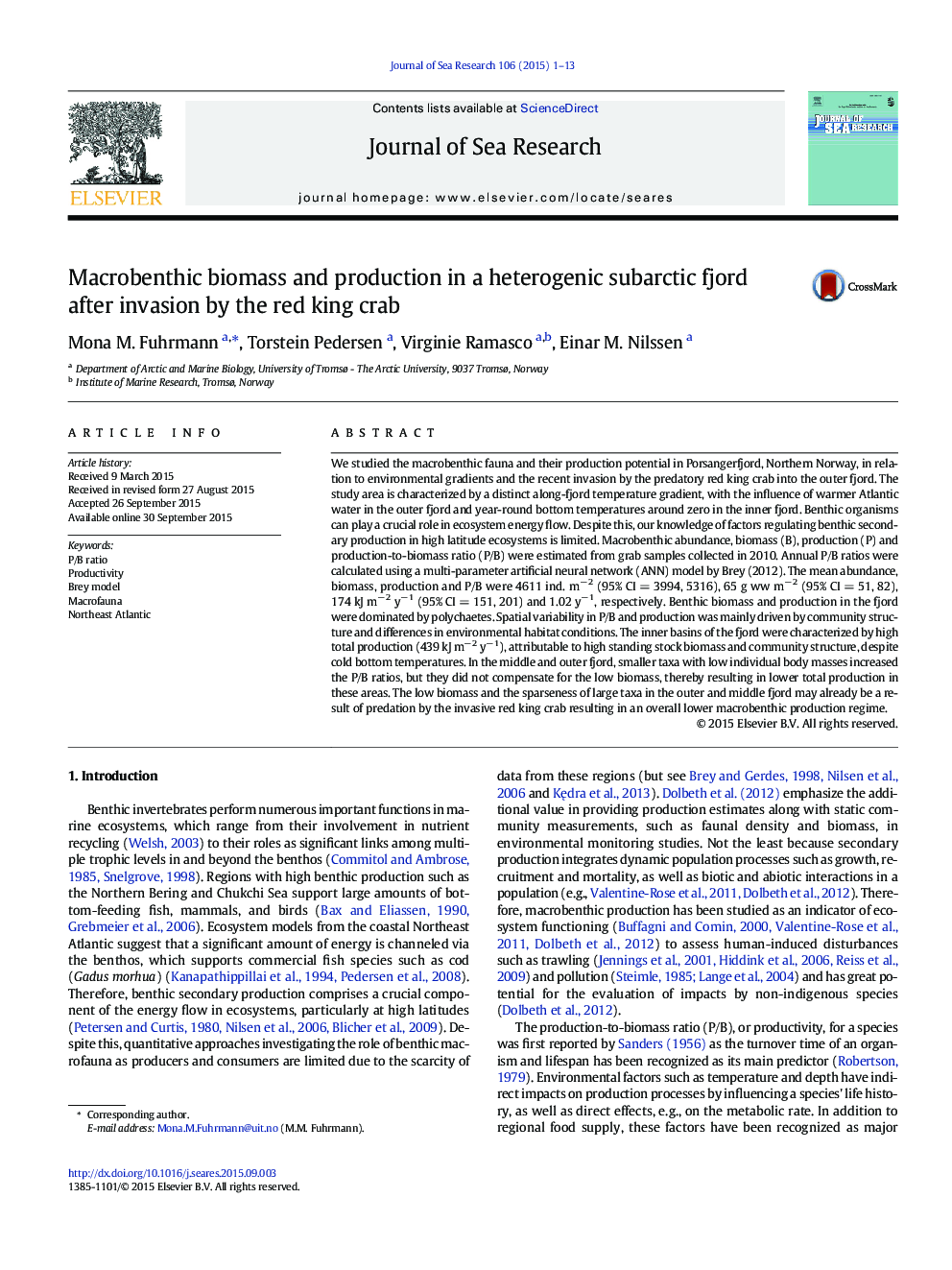| کد مقاله | کد نشریه | سال انتشار | مقاله انگلیسی | نسخه تمام متن |
|---|---|---|---|---|
| 4549648 | 1627468 | 2015 | 13 صفحه PDF | دانلود رایگان |

• Macrofaunal biomass and production was studied in a subarctic Norwegian fjord.
• Benthic biomass and hence, production, was highest in the inner area, despite year around cold bottom temperatures.
• Spatial variability in P/B and production was mainly driven by community structure and differences in environmental habitat conditions.
• Red king crab densities correlated negatively with macrobenthic biomass and production.
• Predation by the invasive red king crab could change prevailing benthic production regimes.
We studied the macrobenthic fauna and their production potential in Porsangerfjord, Northern Norway, in relation to environmental gradients and the recent invasion by the predatory red king crab into the outer fjord. The study area is characterized by a distinct along-fjord temperature gradient, with the influence of warmer Atlantic water in the outer fjord and year-round bottom temperatures around zero in the inner fjord. Benthic organisms can play a crucial role in ecosystem energy flow. Despite this, our knowledge of factors regulating benthic secondary production in high latitude ecosystems is limited. Macrobenthic abundance, biomass (B), production (P) and production-to-biomass ratio (P/B) were estimated from grab samples collected in 2010. Annual P/B ratios were calculated using a multi-parameter artificial neural network (ANN) model by Brey (2012). The mean abundance, biomass, production and P/B were 4611 ind. m− 2 (95% CI = 3994, 5316), 65 g ww m− 2 (95% CI = 51, 82), 174 kJ m− 2 y− 1 (95% CI = 151, 201) and 1.02 y− 1, respectively. Benthic biomass and production in the fjord were dominated by polychaetes. Spatial variability in P/B and production was mainly driven by community structure and differences in environmental habitat conditions. The inner basins of the fjord were characterized by high total production (439 kJ m− 2 y− 1), attributable to high standing stock biomass and community structure, despite cold bottom temperatures. In the middle and outer fjord, smaller taxa with low individual body masses increased the P/B ratios, but they did not compensate for the low biomass, thereby resulting in lower total production in these areas. The low biomass and the sparseness of large taxa in the outer and middle fjord may already be a result of predation by the invasive red king crab resulting in an overall lower macrobenthic production regime.
Figure optionsDownload as PowerPoint slide
Journal: Journal of Sea Research - Volume 106, December 2015, Pages 1–13